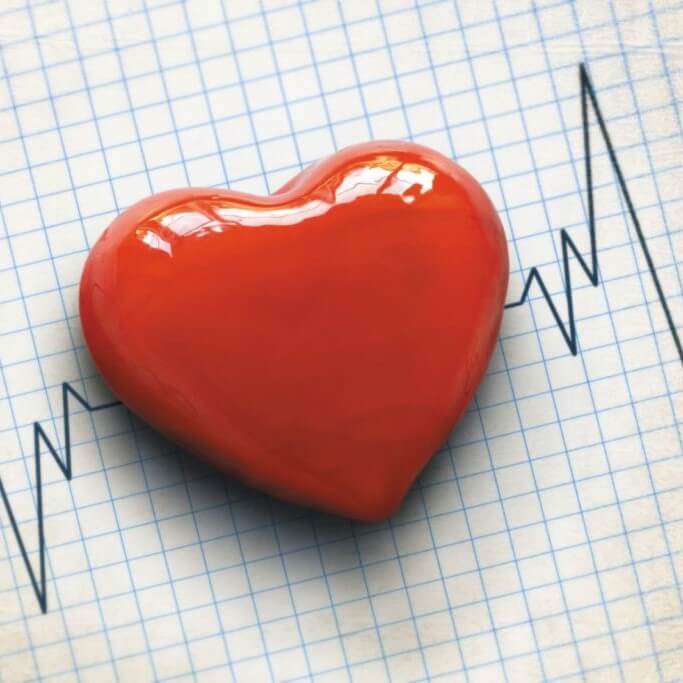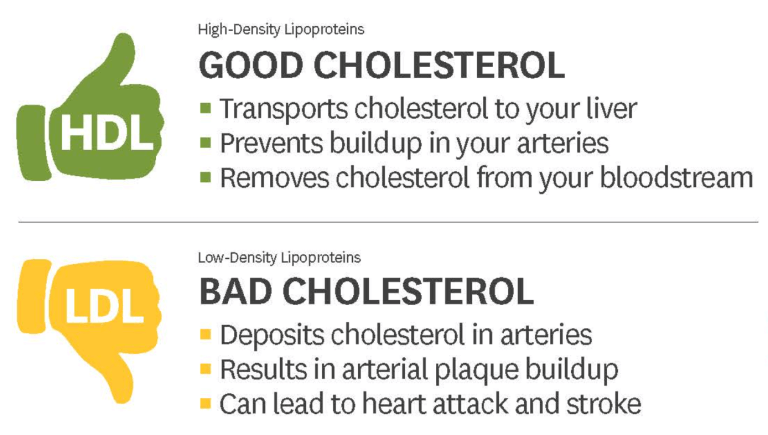
Cholesterol: The Good, the Bad and How to Manage It
High cholesterol can be a problem for some, despite their activity levels. Learn the two types of cholesterol and how to keep your levels in a healthy range.
Cholesterol is a waxy, fat-like substance your body needs. Sounds gross, right? That gunk is needed to function properly, but like most things – too much can cause problems. Since your liver makes most of the cholesterol you need, if you’re eating high-fat foods, you could be increasing your unhealthy cholesterol levels with your diet. And, for some people, their liver makes too much, which can be made worse by an unhealthy diet – leaving an excess of that waxy gunk for your system to deal with.
If your cholesterol levels aren’t within the recommended range, you may be at risk for more serious medical issues like a heart attack or stroke.
Two Types of Cholesterol
Cholesterol is often referred to as “good” or “bad” cholesterol. Here’s what that really means:
- Good Cholesterol: Also known as HDL (high-density lipoprotein). This type of cholesterol works like a trash collector. It travels through your bloodstream and gathers up other bits of cholesterol, taking it to your liver for disposal.
- Bad Cholesterol: Also known as LDL (low-density lipoprotein). Too much of this type is a plaque builder – the primary reason people have clogged and damaged arteries.
Managing Your Cholesterol Levels
A blood test will reveal your cholesterol levels – LDL, HDL, total cholesterol and triglycerides. (High triglycerides can increase your risk of heart disease) Your doctor will evaluate your test results and consider your lifestyle choices, medical and family history to determine if your cholesterol is at a level that causes concern.
If your cholesterol levels put you at risk for serious medical concerns, below are things you can do to help improve your numbers.
- Eat a heart-healthy diet of foods like nuts, fish, whole grains, beans and fruit
- Avoid high-fat foods like fried foods, deli meats, butter, hydrogenated oils, trans fats or saturated fats
- Quit smoking
- Lose weight
- Drink alcohol in moderation
- Exercise at least 30 minutes per day, five days a week
Your cholesterol is 75% what your body makes and 25% what comes from the food you eat. Using the methods mentioned above, you’ll be in a good position to keep that gunk in your arteries at normal levels. And, if you have trouble remembering which cholesterol type is good and which is bad, think thumbs up (good) for high (H) and thumbs down (bad) for low (L). This visual may help:

Questions?
For more information, visit myuhc.com, SteelPerks.com or contact the HR Help Desk at 216.242.2886 (internal extension 19780) or Corporate.HR@olysteel.com.
